October 2023 Captain Judy monthly inshore offshore fishing report and Little Miss Judy story Heads In Tails Out story! 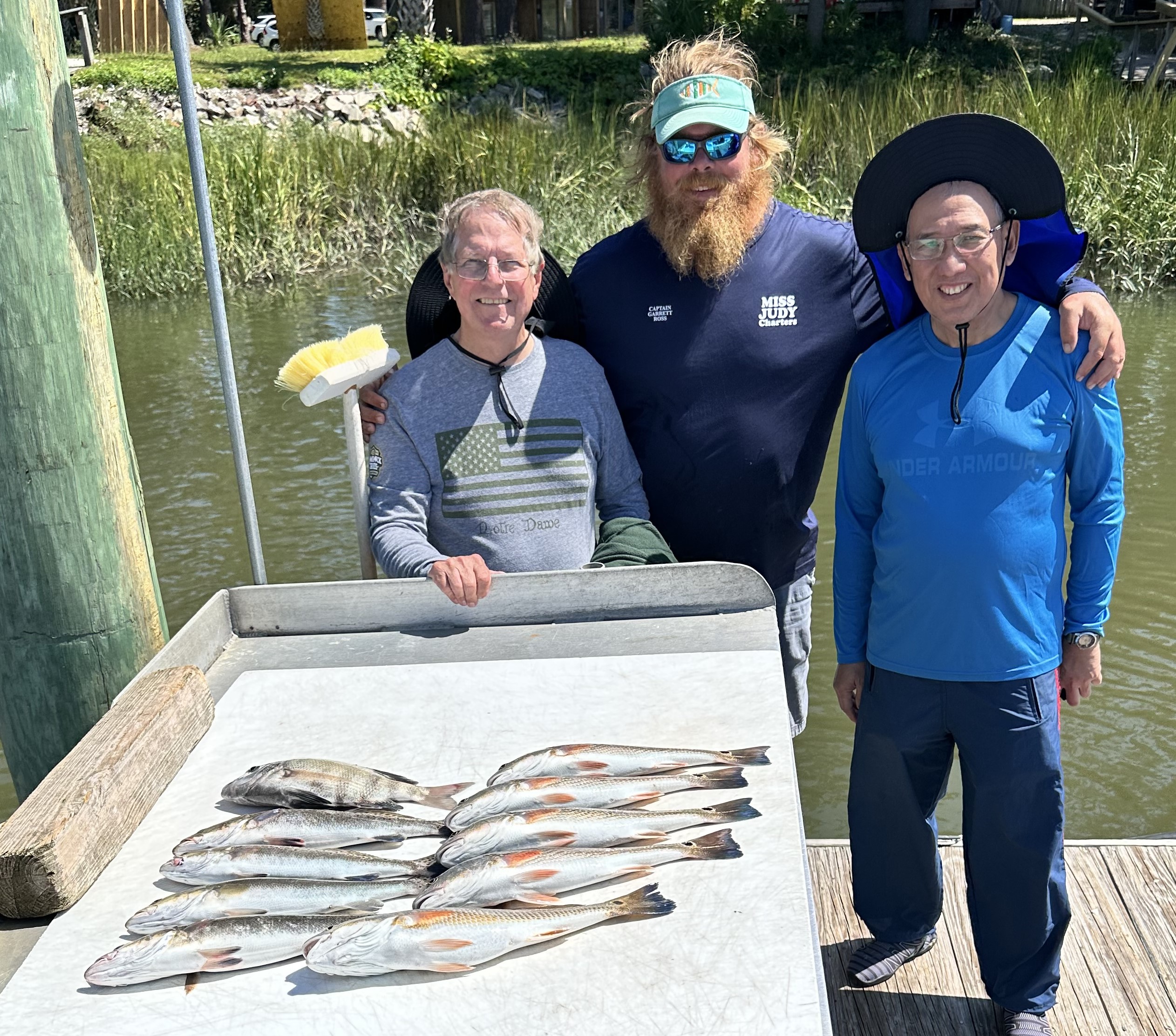
Captain Garrett Ross of Miss Judy Charters for years has always taken Dr. Geoff Peters (gray) Savannah and Dr Ping Pajarillo (visiting from Philippines) inshore fishing. Oh, by this way this is what they kept for a few dinners. They released the rest! What’s on the fish cleaning table? Spotted sea trout, red fish, and sheepshead.
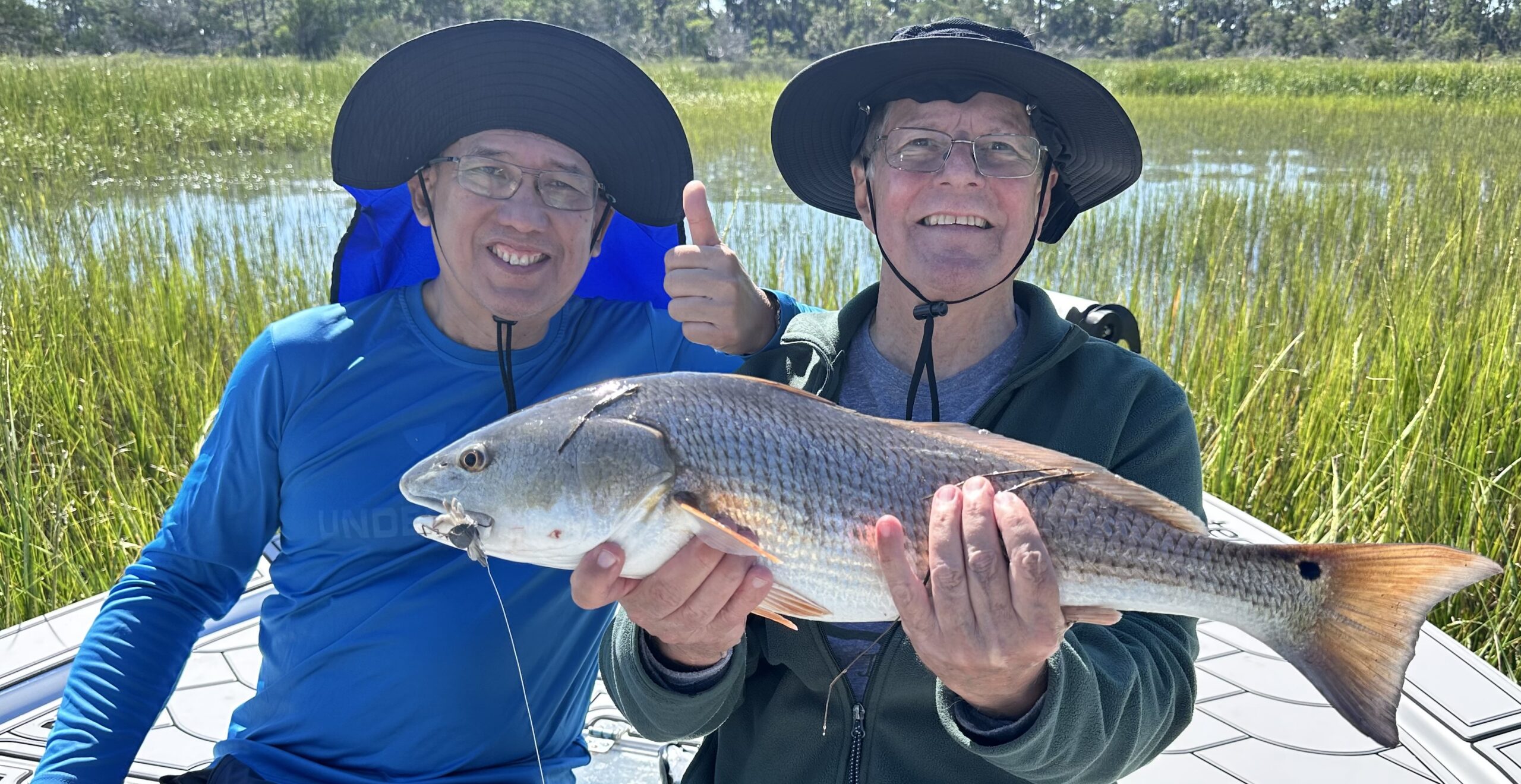
While inshore fishing with Captain Garrett Ross of Miss Judy Charters Dr. Ping scored a big trophy “still swimming” red fish! As you can see this fish was caught in the grass and even brought a little alone to share. What this heck did this fish eat? Rubber life like crab, which is in defense mode! See below for more details!
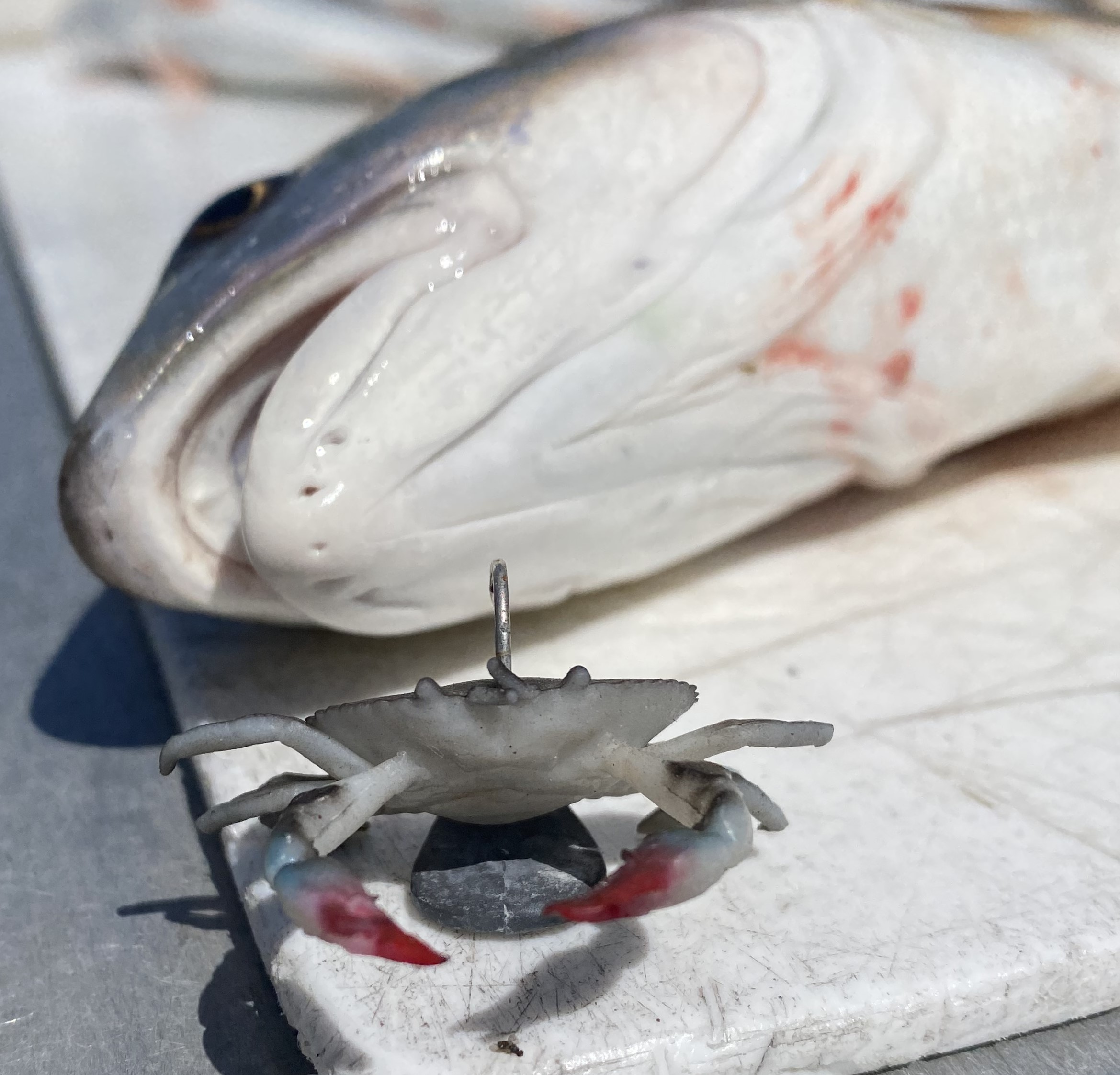
Please meet Captain Garrett Ross of Miss Judy Charters, new somewhat crabby friend. It’s a Savage crab artificial bait. https://www.savagegear.com/saltwater/soft-bait-lures/crab
Now how the heck do you work a lure configured like this? According to Captain Garrett it is not what you think. Tie directly to the leader line, cast where you think the fish are, let it fall, and wait. You don’t have to move it or work it. There are no special reeling moves to be made. Just let it sit until you want to relocate it! And all I have to say about this is LOCATION LOCATION LOCATION! And when you arrive at this destination there is almost always a catch to be had!
What’s happening inshore now!
It is no secret that fall is in the air. The fact of the matter is we all know it includes fish. During this time when temperatures drop fish make specific moves, which require more food. All this boils down to is the fact is that fish need more to eat during this time frame. Since they are on a mission for life they need to eat. So, the normal fall/winter fish migration has started. With all this being said, “It’s time to go fishing!”
For those that like to go inshore fishing we now have an incredible red fish, spotted sea trout, and flounder bite here on the coast. As with anything, especially fishing, when you fish and fish a lot you know where they are. So, let’s start with those of you that don’t fish a lot. The first thing is yes you can catch fish from your own boat. However, if you slip and miss exactly where they are for that day your catching for the day could be a little down. Now, I am not saying that my dream team of inshore fishermen catches them every day, but most of the time. However, if there is a biting fish out there this team is normally on top of them.
The thing about fishing is, when you are a fisherman, you understand that if you don’t fish a lot, then it’s hard to catch fish. I ought to know, I have been fishing for over 50 years, fish are still trying to get out of my way. And on some occasions, they do. However, thank goodness it’s not that often, because we are fortunate in this area if one fish doesn’t bite, we just move on to another species.
The bottom line in regard to this fishing article is the fact if you want to go fishing and don’t want to worry exactly where or not the fish are, “please give us a call!” (912 897 4921 for fishing at its finest both inshore and offshore!)
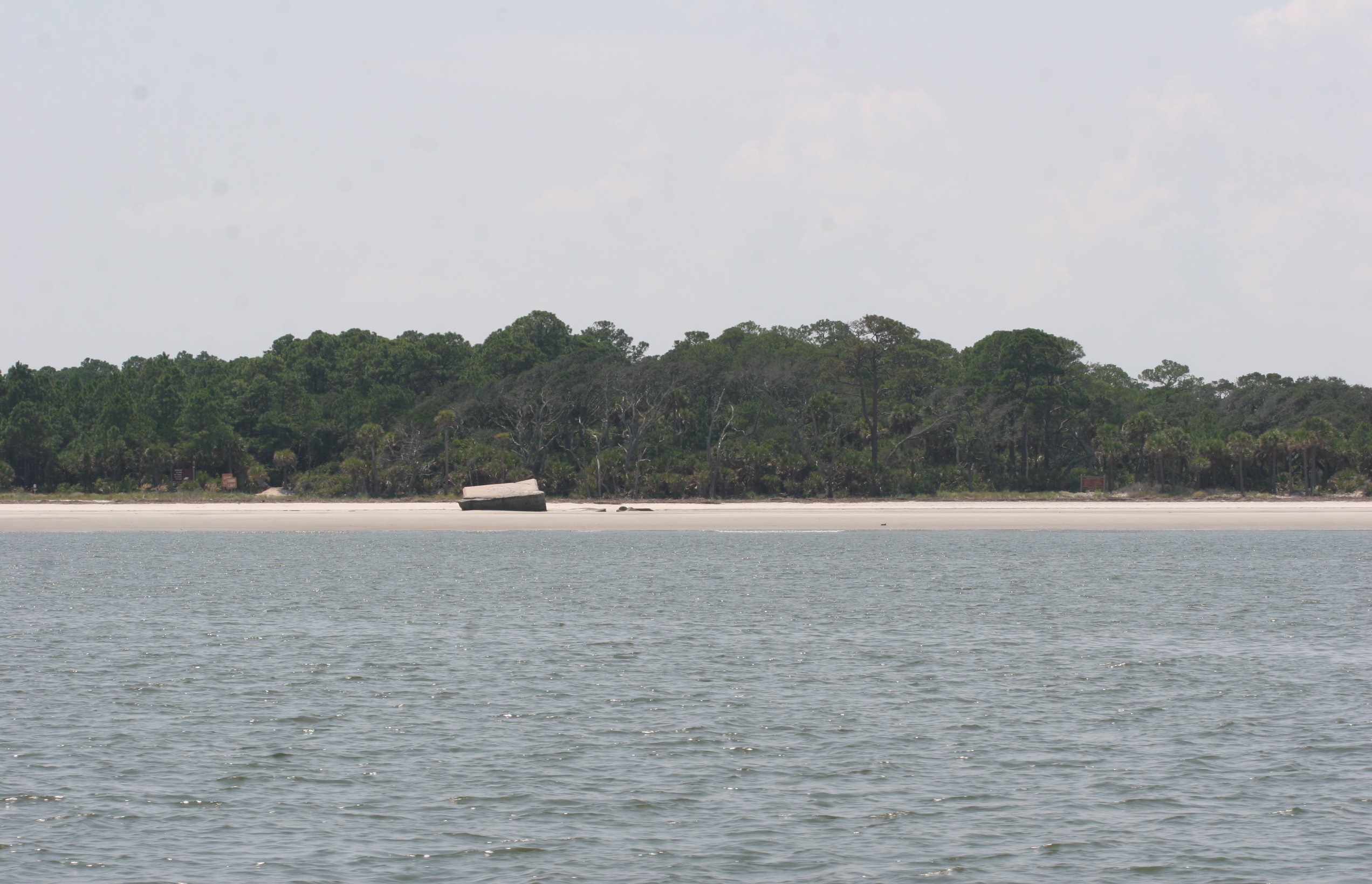
This picture was taken before Hurricane Matthew 2016! The was a beautiful untouched place…..see next picture….
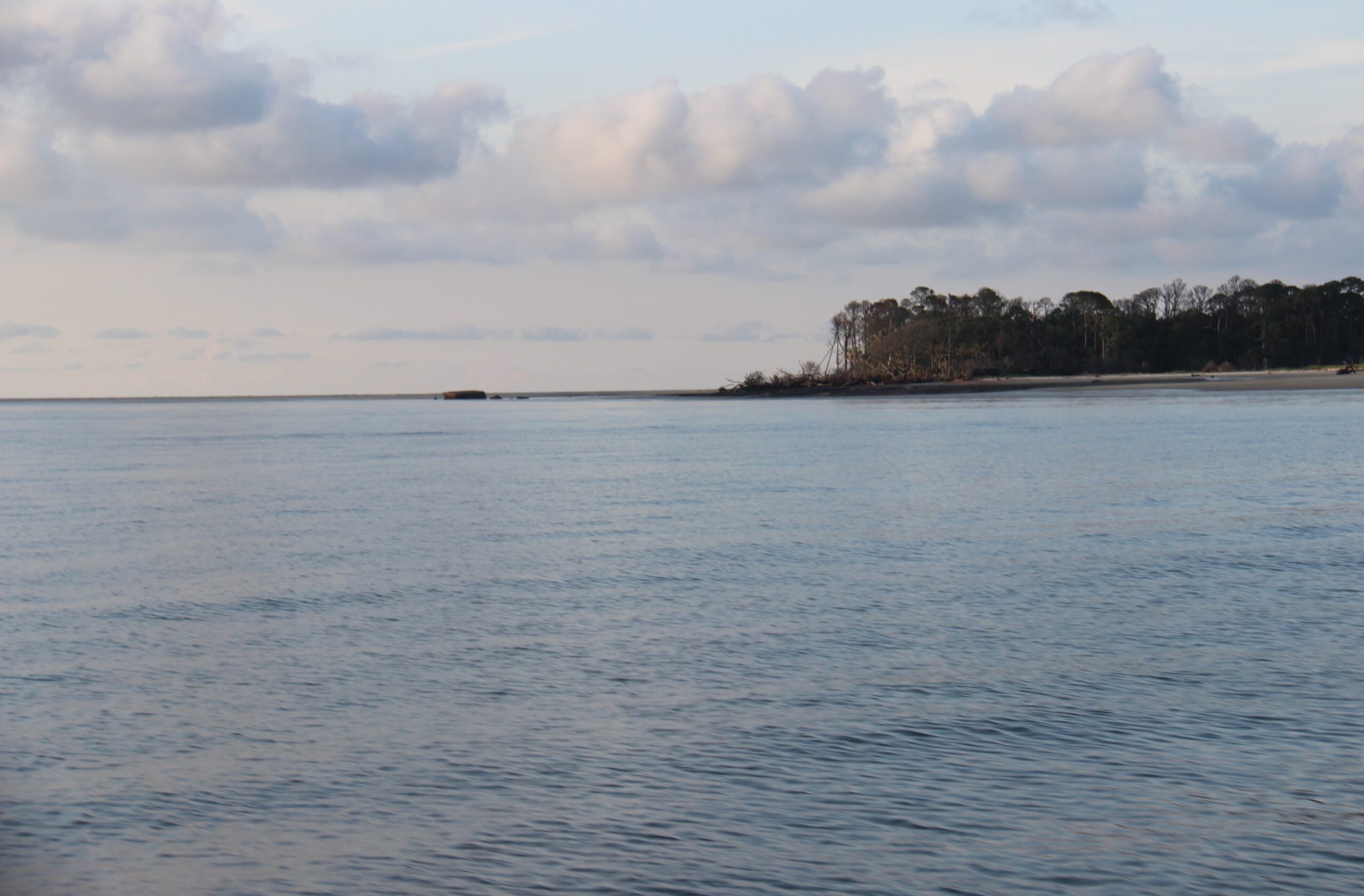
Still beautiful, but a little changed! The is Wassaw Island beach after Hurricane Matthew 2016 hit. Although there is quite a bit of change there is still a lot of beaches left to fish front or around!
Just plain fishing from the beachfronts!
Just so you will know fishing around the structure, especially around the beachfront areas can be very interesting. Here’s why…large sheepshead and black drum have started their fall migration from the sounds to the beachfronts. Best baits are the purple back fiddler crab or live shrimp. These fish have been a little on the large size. So therefore, don’t forget your dip net or your camera. Now that you know what you can catch while just fishing off the beach just think what you can catch from a boat! Lots of catching possibilities!
Short Boat Rides to the Fish!
Offshore report!
For those that just want to catch and have lots of opportunity to do so now is the time to take an offshore fishing trip. Artificial reefs and the Savannah Snapper Banks are holding bottom and top water fish.
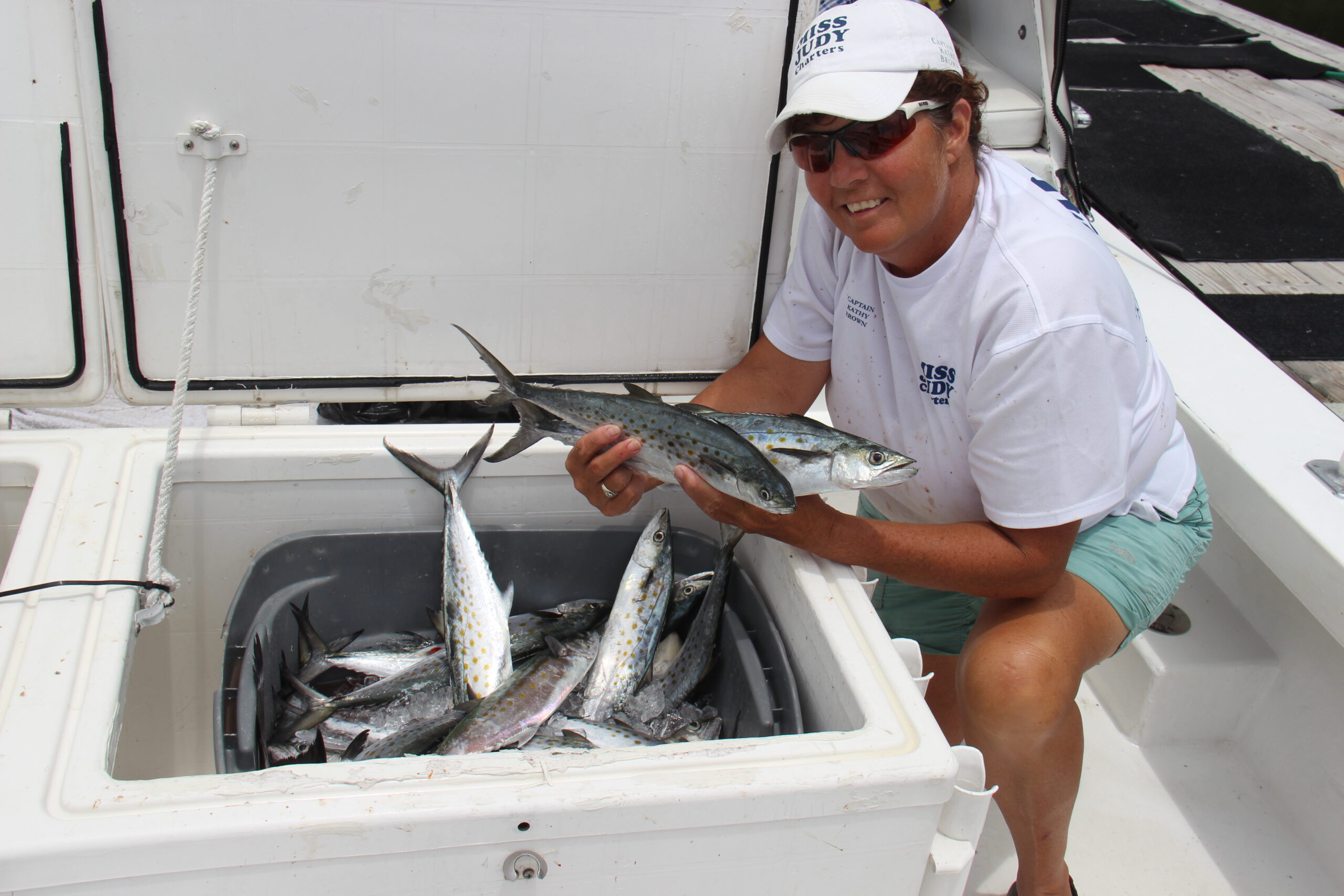
Captain Kathy Brown of Miss Judy Charters is holding up some ice Spanish Mackerel! Yes it is Spanish Mackerel Time!
Artificial Reefs
As of October 1, fall migration of Spanish mackerel is now taking place. We have been seeing and catching Spanish mackerel from the beachfront to the artificial reefs located in 60 feet of water.
Offshore Bite
It’s true ocean fishing is not for everyone and on some occasions, I have had customers say, “Don’t won’t to go offshore, because the boat ride to the fish is too long.” Well, in some cases this is true. However, once you arrive at the fishing grounds fish catches do happen. Another thing that most don’t understand is that the ride to the fishing area can be very interesting. There is a good chance that you will see something that you have never seen before. Believe me we try to point out everything of interest that we can!
So lets just say for argument sake that to go to the Savannah Snapper Banks is a two-hour boat ride, because it is. However, we do stop and fish a little on the way for baitfish and sometimes to troll for king or Spanish mackerel. Here again this might not be for everyone.
So I am going to offer up some shorter offshore boat rides to the fish.
One-hour boat rides to the offshore fish!
Artificial Reefs!
When in the ocean an hour boat ride doesn’t last long. In most cases it certainly doesn’t seem like an hour, at least not to me. During this time artificial reefs are holding the interest of a lot of different kinds of fish. For instance:
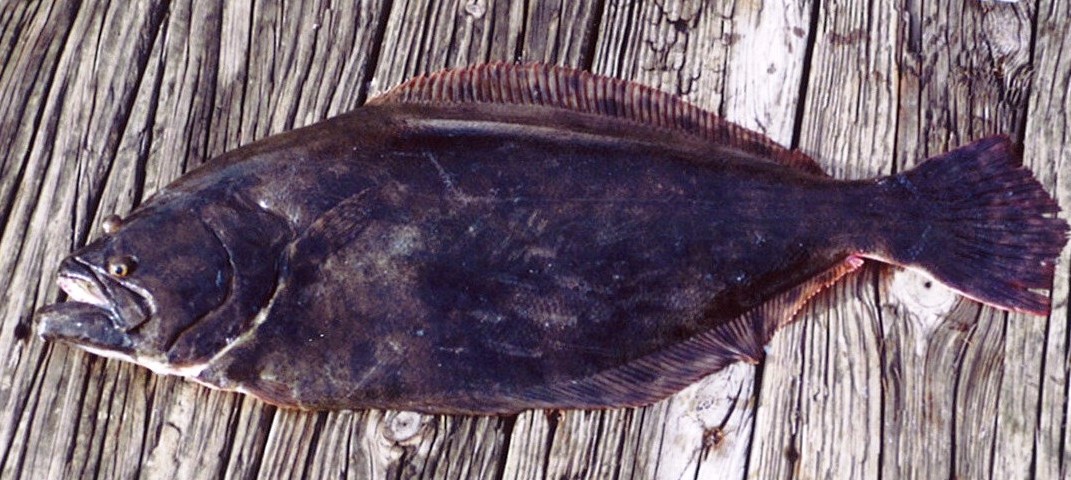
What is this? A nice offshore flounder better known as a doormat!
Flounder
During the fall and winter large doormat flounder migrate to the artificial reefs for a feeding bonanza. There is an art to catching them, but after it’s explained “hook ups can happen!”
Black sea bass
During this time black sea bass migrate to the artificial reefs using them to as a full-time staging arena. They stack up on the structure and low relief areas feeding on small live bait and whatever passes by. This is a full-time catching deal!
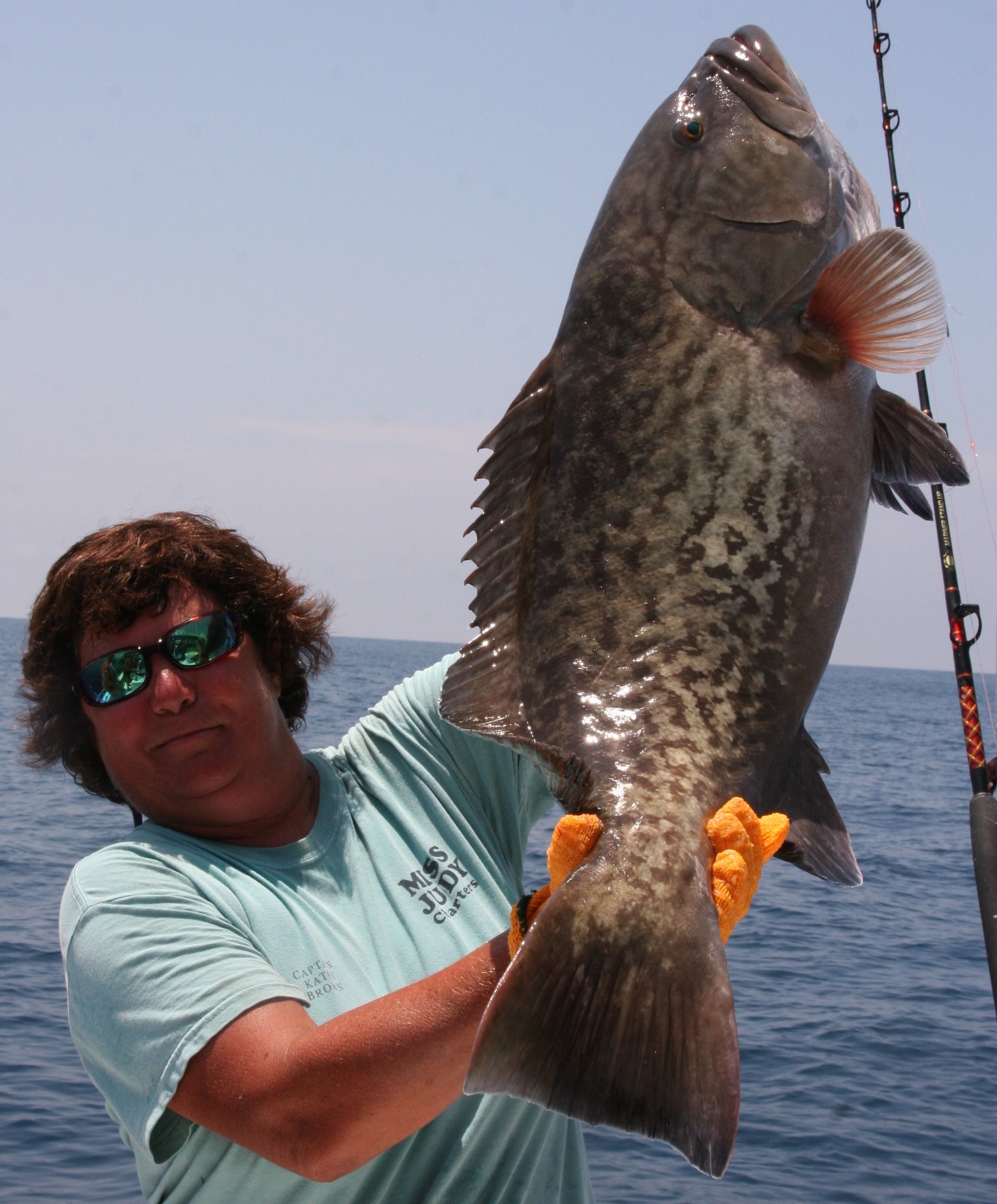
What is this? This is a gag grouper that was caught in less than 60 feet of water in 2022. We call this fish a resident. Why? See how dark this fish it….well, once the gags make their way to the dark water aka shallower water, it’s lighter outer camouflage changes. I call this blending in mode! Yep, there are fish that are big enough out there that could and do swallow a fish this size. It is not only for protection, but it allows them to go on successful convert feeding missions!
Gag Grouper
Gag groupers are pretty much an offshore fish that finds 80 plus depth water at a place they want to be. However, when fall falls into place they go into migrating mode. Believe it or not, but some groupers make a move inshore. I’m not going to say you won’t catch them in deeper water, because you will. However, some gags based on instincts migrate west during the fall and winter. So therefore, you get deep water catching in a shallow water situation. During the months of October, November, and December it is possible to successfully target gags in less than 70 feet of water. I guess I should say the artificial reefs from the shore to about 70 feet of water.
How do you get you best chance to catch a GAG?
The right bait is one of the key essentials when it comes to attracting a gag. During this time of the year, it is possible to still catch some nice size ocean menhaden, but every day after the month of October your chancing start slimming down. Your next inshore bait could be mullet and blue fish, but they need to be alive. However, if they are fresh dead I suggest butter flying them. See picture below!
Your best bet is to try and catch any live bait from the area that you are going to fish for grouper. I like to get a few Sabiki bait rigs and let my customers fish with them. It is so cool when you drop a small rig with 6 to 8 hooks and then you catch as many fish as you have hooks! I suggest keeping all fish alive in your live well. You could find yourself catching pinfish, ruby red lips, scup, sand perch, rock bass, and etc…all of these bait fish have air bladders. So might have to deflate their air bladder before placing in live well.
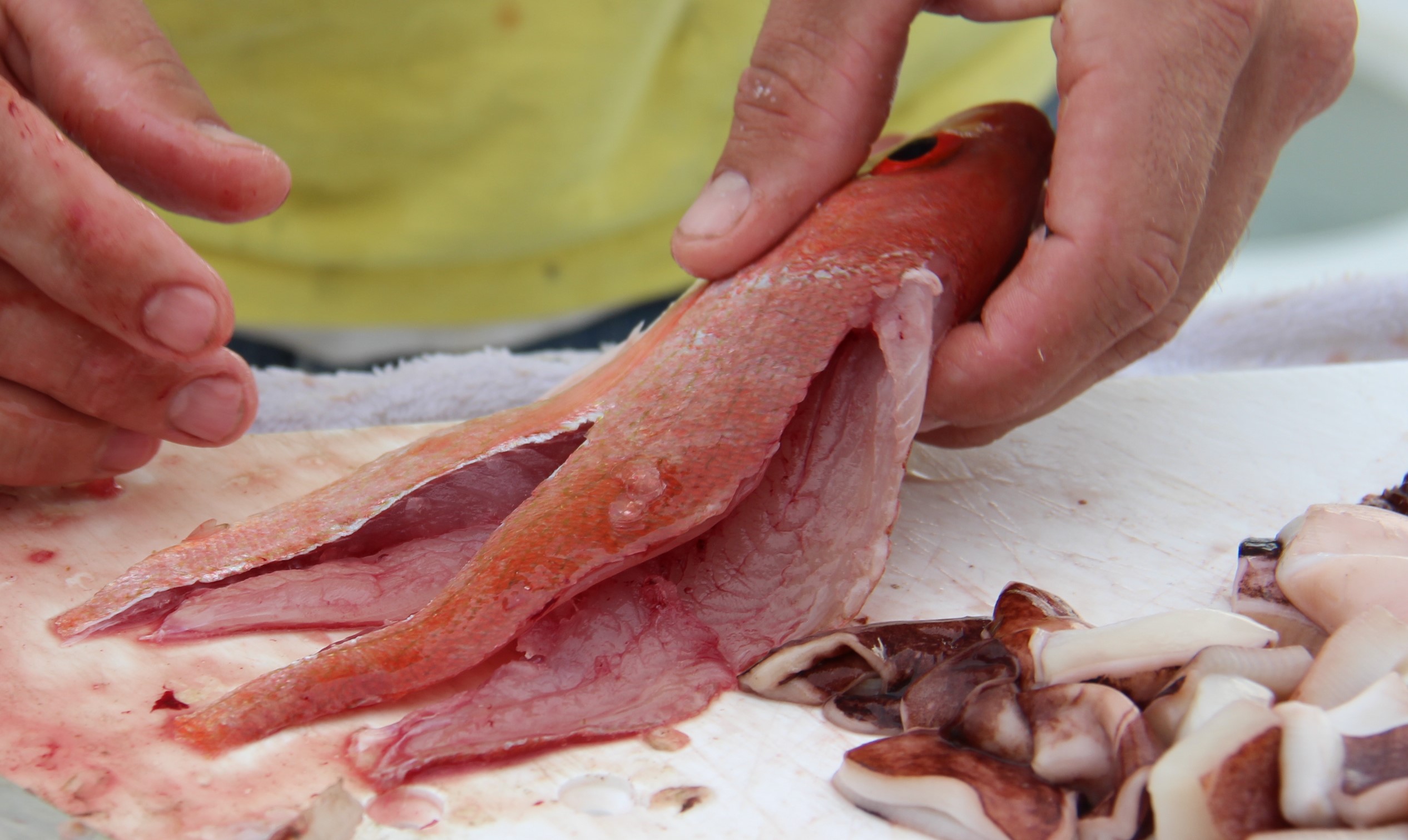
This is what a butterfly bait looks like after you have removed the backbone! It is best to lip hook this bait, drop it to the bottom, and give this fish time to eat. Heck, after all a bait will 4 swimming tails is bound to get the attention of more than one fish. And it is true when using bait like this that it does attract a possible small fish bite, because it fits. However, just remember this: Where there are small fish larger ones are likely to follow! As my father would say, “Where you got fish you get more fish!”
Attention All Offshore Fishermen!
You got homework! Just Do It!
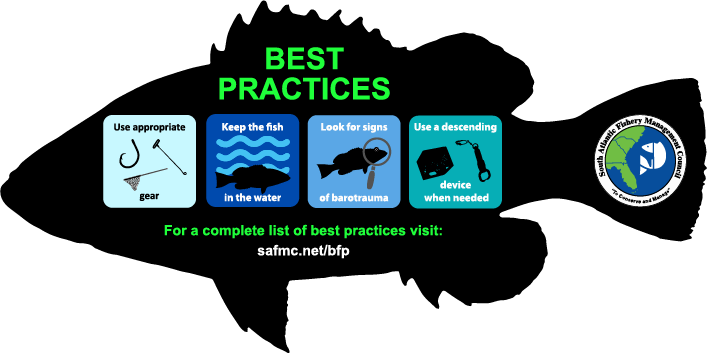
Make sure to have the following required gear when fishing for or possessing snapper/grouper species in the South Atlantic Federal waters: Please go to www.safmc.net (On home page open regulations – then BEST FISHING PRACTICES) this page explains all the new requirements that you must have onboard when fishing for snapper-grouper species. Before heading out please read this page!!
You will need to have a descending device (rigged and ready), de-hooking tool, non-offset circle hooks, and non-stainless steel hooks! The best fishing practices page does a great job of explaining in detail your requirements. There are also several videos that are very informative! Get out the popcorn it’s movie time!
Little Miss Judy Believe it or not!
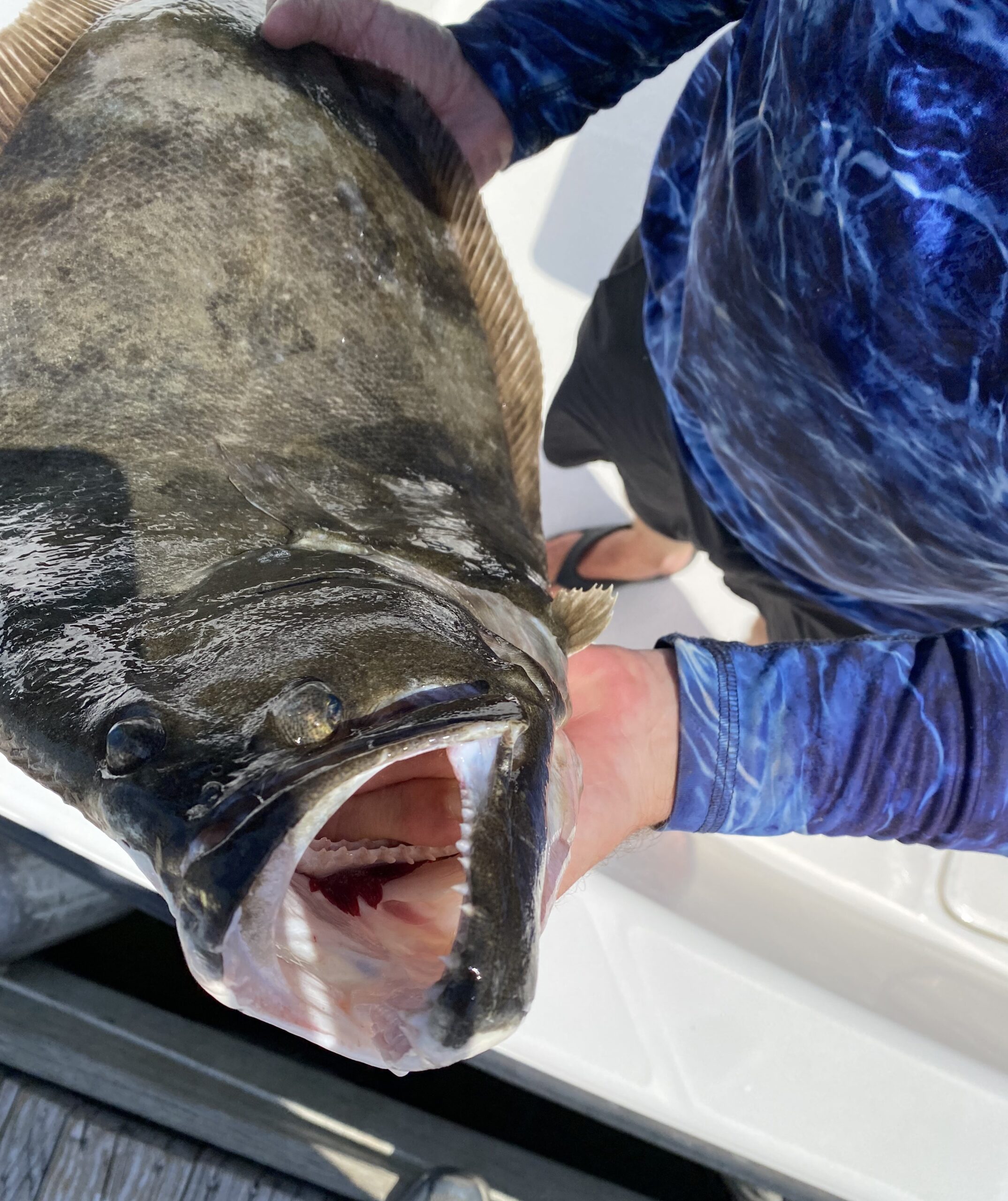
What is this? A big mouth flounders!
Heads in tails out!
During this time of the year there are lots of flounder hanging around the structure at the artificial reefs. When I used to dive, I got to see flounder up close and personal. When they are in the offshore feeding mode, they still go sheath camouflaging themselves on the ocean floor, which is what they are known for doing the best. There is this other thing that they do. They do what I call “stack up” in the wrecks just like plates. That’s about the only way I know to describe it. I can’t say which tide stage that they go into the stacking mode. However, this is what I do know. Flounder does this stacking thing that is interesting to say the least. They stick their heads in the wreck, but leave their tail completely exposed. I ought to know this, because I have on occasion grabbed a few of them by the tail and tried to pull them out. The act of tail pulling can be a little tricky because they are so slippery. But I do have to admit it was fun.
As I said earlier, they leave their tail exposed. It’s my opinion that the flounder leaves their tails hanging out to keep up with the current’s movement. So therefore, their tail movement lets them know if the current is moving or standing still. Since I couldn’t spend a complete tide stage down under, I’m still not sure which tide they hid on, and which tide they feed on. All I know is that when targeting flounder at the offshore reefs you need to place your bait on the out skirts of the perimeter. The reason being is when they are in the stacking mode they are certainly not feeding!
Once outside the wreck area the flounder stage on the outskirts burrowed down hiding on the ocean floor waiting for a feeding event. We do catch some of the flounder mixed in with the schools of black sea bass right over the structure. However, the best method is to anchor and fish for them on the outskirts of the wreck area. I suggest going with a Carolina rig while using some sort of live hardy bait such as large mud minnows and if you don’t have large ones…use more than one on the hook. I also suggest a small sand perch or black sea bass. Now if you don’t have any live bait use a strip type cut of fillet that will flow in the current. The flounder is a fish that sometimes stalks first before attacking. I suggest dedicating one line just for this type of fishing, casting it out, set to a medium drag, and put in rod holder. You will know when you are hooked up. And whatever you do don’t give them time to eat, don’t forget your dip net, or your camera!
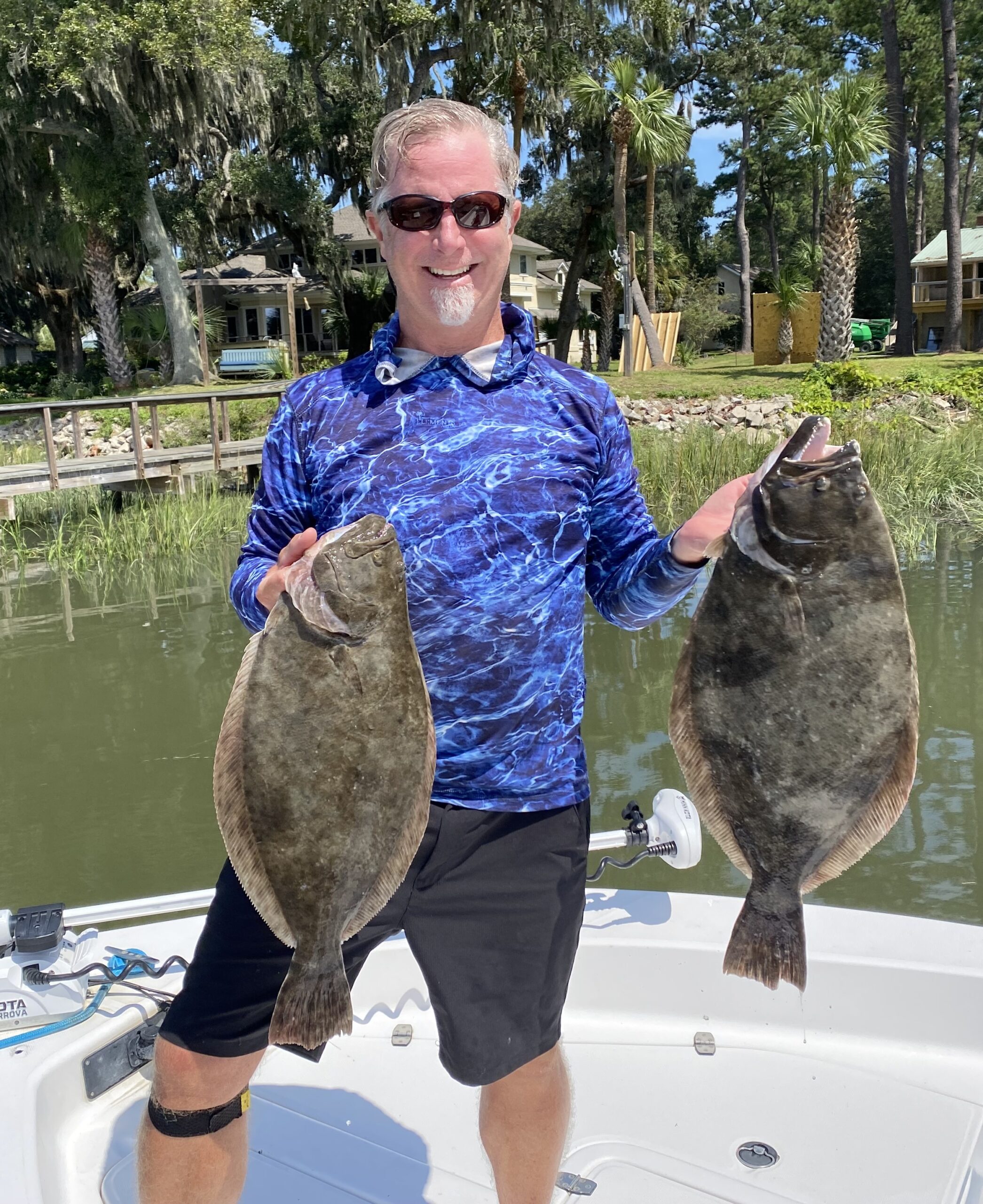
Captain Matt Williams of Miss Judy Charters holding 2 very nice flounders! What did they hit? Captain didn’t say!
Thanks for reading!
Captain Judy

